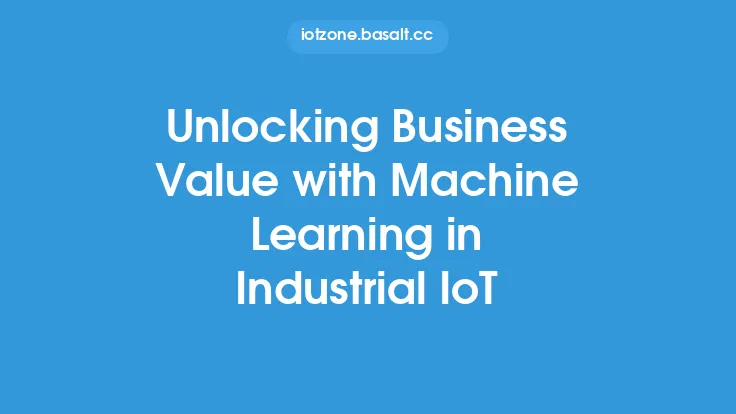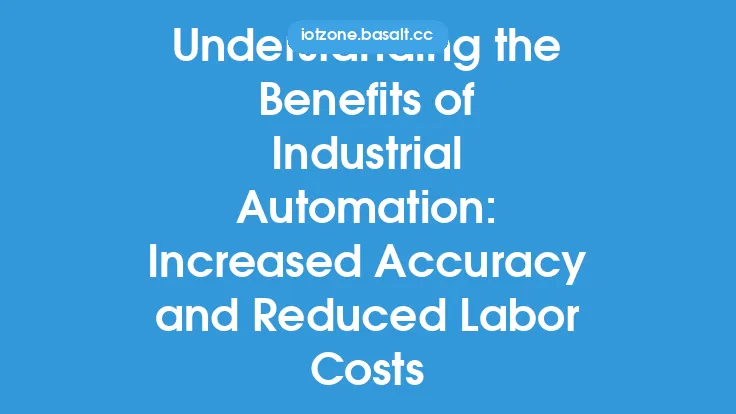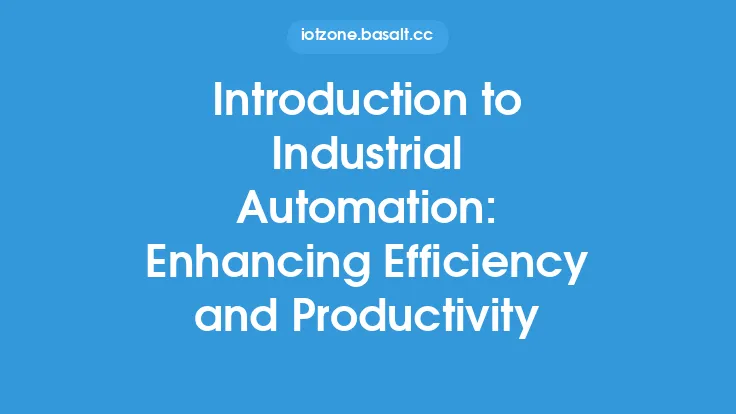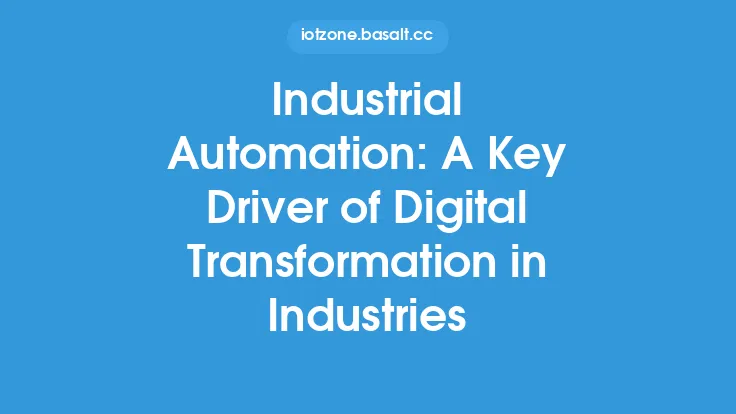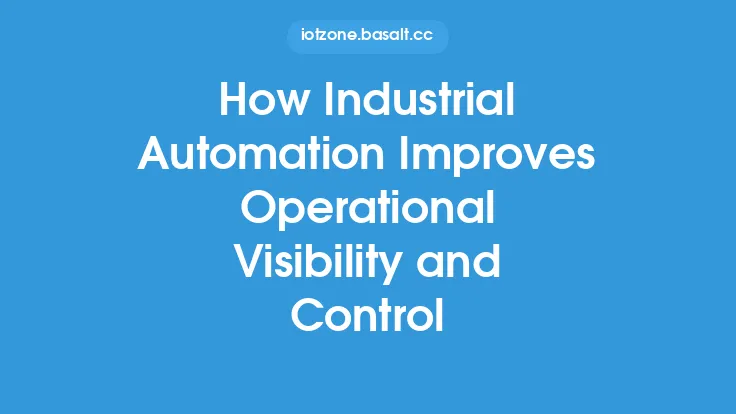Industrial automation has become a crucial aspect of modern industries, enabling companies to streamline processes, improve efficiency, and reduce costs. By leveraging industrial automation, businesses can unlock significant value and gain a competitive edge in the market. However, to achieve this, it is essential to adopt a strategic approach to industrial automation, taking into account the specific needs and goals of the organization.
Understanding Industrial Automation
Industrial automation refers to the use of technology and machinery to automate industrial processes, such as manufacturing, processing, and distribution. This can include a range of technologies, from simple sensors and actuators to complex systems like robotics, machine learning, and artificial intelligence. The primary goal of industrial automation is to improve productivity, reduce labor costs, and enhance product quality.
Key Components of Industrial Automation
To develop an effective industrial automation strategy, it is essential to understand the key components involved. These include:
- Sensors and Actuators: These are the building blocks of industrial automation, providing real-time data and enabling machines to interact with their environment.
- Control Systems: These systems use data from sensors to make decisions and control the behavior of machines and processes.
- Communication Protocols: These protocols enable different devices and systems to communicate with each other, facilitating the exchange of data and instructions.
- Software and Programming: This includes the software and programming languages used to develop and implement industrial automation systems.
Developing a Strategic Approach to Industrial Automation
To unlock business value with industrial automation, companies must develop a strategic approach that aligns with their overall business goals. This involves:
- Conducting a Needs Assessment: Identifying areas where industrial automation can add value and improve processes.
- Defining Automation Objectives: Establishing clear goals and objectives for the automation project, such as improving productivity or reducing costs.
- Selecting the Right Technologies: Choosing the most suitable technologies and systems to achieve the defined objectives.
- Designing and Implementing the Automation System: Developing and deploying the automation system, including the integration of hardware and software components.
- Testing and Validation: Verifying that the automation system functions as intended and meets the defined objectives.
Implementation and Integration
The implementation and integration of industrial automation systems require careful planning and execution. This includes:
- System Design: Designing the automation system to meet the specific needs of the organization.
- Hardware and Software Selection: Choosing the most suitable hardware and software components for the automation system.
- System Integration: Integrating the automation system with existing processes and systems.
- Testing and Commissioning: Verifying that the automation system functions as intended and meets the defined objectives.
Maintenance and Support
To ensure the long-term success of industrial automation systems, it is essential to provide ongoing maintenance and support. This includes:
- Regular Maintenance: Performing routine maintenance tasks to prevent downtime and ensure optimal system performance.
- Troubleshooting and Repair: Identifying and resolving issues with the automation system.
- Software Updates and Upgrades: Keeping software and programming languages up to date to ensure compatibility and security.
- Training and Support: Providing training and support to personnel to ensure they can effectively operate and maintain the automation system.
Best Practices for Industrial Automation
To unlock business value with industrial automation, companies should follow best practices, including:
- Start Small: Begin with a small-scale automation project to test and refine the approach.
- Focus on High-Impact Areas: Prioritize areas with the greatest potential for improvement and return on investment.
- Develop a Cross-Functional Team: Assemble a team with diverse skills and expertise to ensure a comprehensive approach to automation.
- Monitor and Evaluate Performance: Continuously monitor and evaluate the performance of the automation system to identify areas for improvement.
Conclusion
Industrial automation offers significant opportunities for businesses to improve efficiency, reduce costs, and enhance product quality. By adopting a strategic approach to industrial automation, companies can unlock business value and gain a competitive edge in the market. This requires a deep understanding of the key components of industrial automation, as well as the development of a comprehensive strategy that aligns with the organization's overall business goals. By following best practices and providing ongoing maintenance and support, companies can ensure the long-term success of their industrial automation systems and achieve significant benefits.
